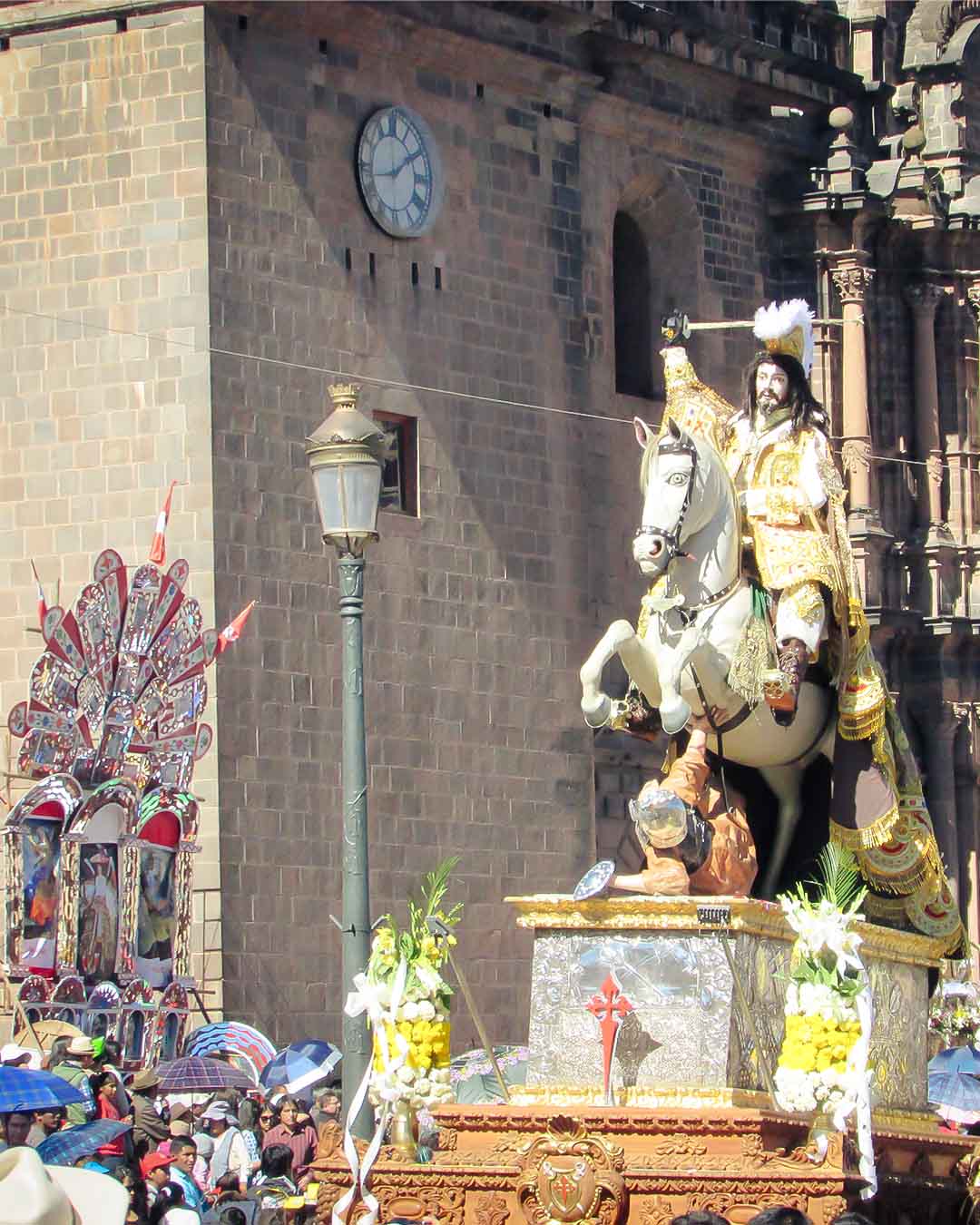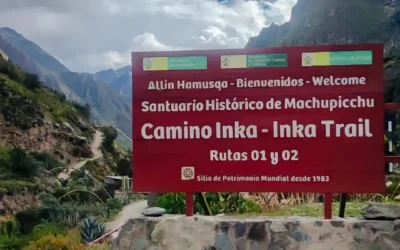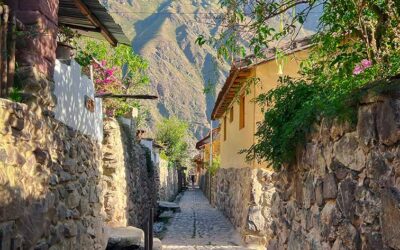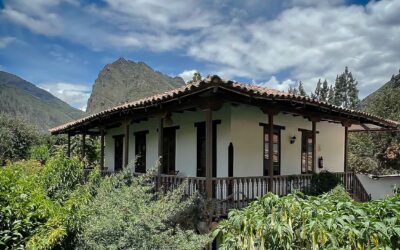In the narrow cobbled streets of Cusco, Peru, every year unfolds an extraordinary celebration: Corpus Christi. This festivity, blending fervent Catholic devotion with the rich Andean cultural tradition, is one of the highlights in Cusco’s calendar. An essential part of this celebration is the procession, where a series of venerated saints are carried on adorned platforms, while the faithful accompany them with chants and prayers. Below, we introduce you to the saints who take part in this thrilling procession:
1. Señor de los Temblores: This image of the crucified Christ is the principal patron of Cusco, believed to protect the city against earthquakes. His presence in the procession is awe-inspiring, with thousands of devotees flocking to pay homage and seek his blessing.
2. Virgen de la Natividad: The Virgin Mary, under the invocation of the Nativity, is another prominent figure in the procession. Her image, delicately adorned with fresh flowers, is carried reverently through the streets of Cusco, while the faithful express their devotion with chants and prayers.
3. San Sebastián: This martyr saint, venerated for his intercession against plague and other illnesses, also participates in the Corpus Christi procession in Cusco. His image is carried on platforms, surrounded by devotees imploring his protection and aid in times of hardship.
4. San Jerónimo: Known for his dedication to meditation and the study of the Scriptures, San Jerónimo is another revered figure in the Corpus Christi procession. His image, adorned with flowers and lights, represents the wisdom and faith that inspire the people of Cusco.
5. Santa Bárbara: The patron saint of lightning and thunder, Santa Bárbara is also part of the Corpus Christi procession in Cusco. Her image, surrounded by symbols of protection against storms, is carried reverently as the faithful seek her intercession in times of danger.
6. Santa Rosa de Lima: The first saint of the Americas, Santa Rosa de Lima, is honored in the Corpus Christi procession for her example of holiness and devotion. Her image, adorned with roses, is carried with love and respect through the streets of Cusco, inspiring the faithful to follow her example of service and dedication to God.
These are just some of the saints who participate in the Corpus Christi procession in Cusco, each with their own story and significance to the Cusqueñan community. Their presence in this celebration reflects the deep faith and devotion of the Peruvian people, as well as their rich cultural and religious heritage.
A Blend of Cultures
Corpus Christi in Cusco is a celebration that reflects the complex history and cultural diversity of the region. Originating in the Catholic tradition brought by Spanish conquistadors, the festival quickly integrated elements of Andean spirituality and reverence for nature. Today, Corpus Christi is a unique fusion of Catholic rituals, indigenous beliefs, and local customs.
Preparation and Decoration
In the weeks leading up to Corpus Christi, the streets and plazas of Cusco are transformed into vibrant works of art. Local communities come together to create intricate tapestries known as “alfombras,” made from colorful flower petals, dyed sawdust, and other natural materials. These ornate designs, often depicting religious symbols and scenes from Andean mythology, adorn the pathways where the Corpus Christi procession will pass.
The Procession
The centerpiece of the Corpus Christi celebration is the grand procession through the streets of Cusco. Led by the Archbishop of Cusco and other religious dignitaries, the procession features elaborately adorned floats carrying statues of saints and religious icons. Musicians play traditional Andean instruments, and participants wear colorful costumes, adding to the festive atmosphere.
Cultural Significance
Corpus Christi is not only a religious observance but also a celebration of community, culture, and identity. It is a time for the people of Cusco to come together, to honor their shared heritage, and to reaffirm their faith. The festival serves as a reminder of the resilience and strength of the indigenous Andean traditions that have endured for centuries alongside Catholicism.




